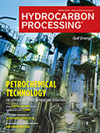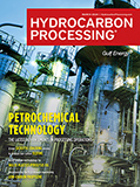Corrosion
Viewpoint: The pathway towards autonomy: How process automation is building the future plant
<i>Hydrocarbon Processing </i> sat down with Jason Urso (JU), Chief Technology Officer, Honeywell Process Solutions, to discuss the current state of the process automation industry, how new technologies are enhancing efficiency and safety, and what the future holds for automation.
Developing and utilizing a novel, toughened epoxy adhesive
When identifying solutions that can offer assurance and longevity, the maintenance and reliability of asset repairs can be challenging.
Storage tank settlement and soil-side corrosion assessment with optimized repair strategy
Aboveground storage tanks are used in several industries with different fluid services. These
HRSG water/steam sampling: Do it right or face potential consequences
Many large industrial facilities—including refineries, and chemical and petrochemical plants—are increasingly turning to co-generation for process steam and power production.
The effects of highly corrosive fluids on valves and disasters that can be avoided
Some of the highly corrosive fluids in the oil and gas industry contain the following compounds: carbon dioxide, hydrogen sulfide, chlorides and moisture.
Innovations
In a continued effort to serve the corrosion industry, Carboline has launched CarboNext, a program to educate, connect, support and engage with the next generation of engineers and professionals.
Prevent corrosion failures at each stage of design, construction and normal operation
Each year, significant economic losses due to corrosion failures occur in the refining and petrochemical industries; unfortunately, many of these losses could have been prevented.
HP Flashback: Excerpts from the 1960s: Petrochemicals rise in prominence and new know-how in refining processes
Petrochemicals rise in prominence and new know-how in refining processes
History of the HPI: The 1960s: Synthetic oils, zeolite catalysts, LLDPE, OPEC and and creation of the PLC
During the 1960s, the global refining and petrochemical industries witnessed new processes and products that enhanced the daily lives of millions of people around the world.
Plastics circularity: How to solve the challenge of retaining quality in recycled polymers
Businesses and governments around the world have united behind the vision of a circular economy for plastics.

- Renewable fuels project in Canada begins production 4/19
- Jet fuel demand growth lags as air traffic exceeds pre-pandemic level 4/19
- Jet2.com to use SAF at London Stansted Airport 4/19
- Neste and New Jersey Natural Gas target reducing greenhouse gas emissions with Neste MY Renewable Diesel 4/19
- Cepsa and Evos join up for green methanol storage in Spain and the Netherlands 4/19
- Russia's Bashneft oil company installs anti-drone nets to protect refineries 4/19




